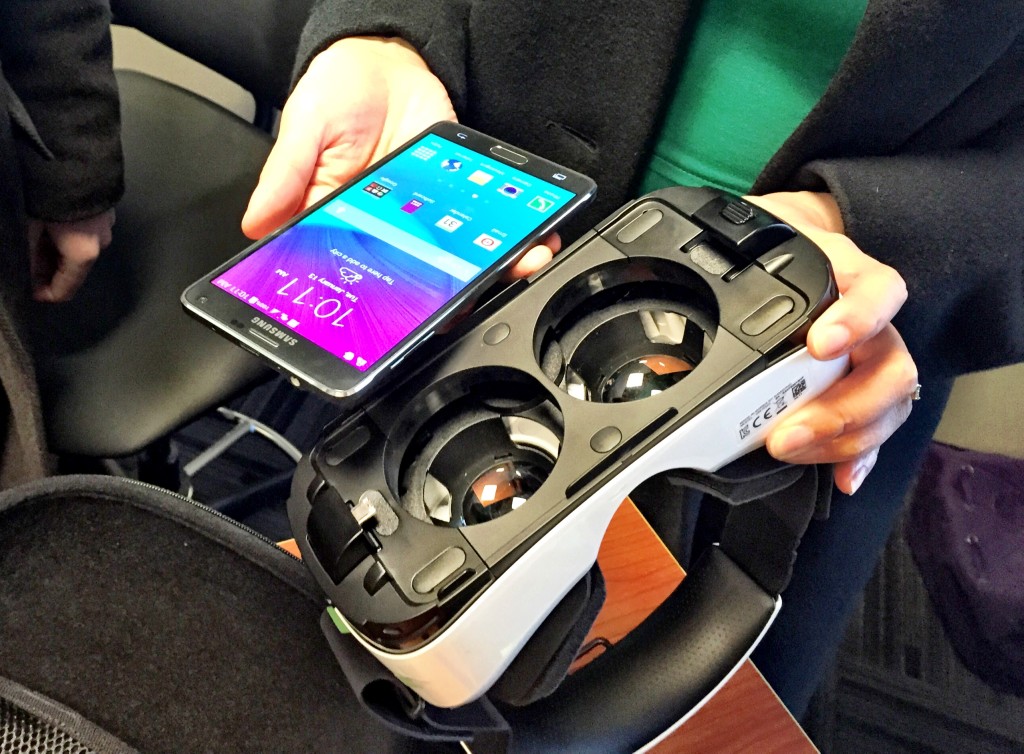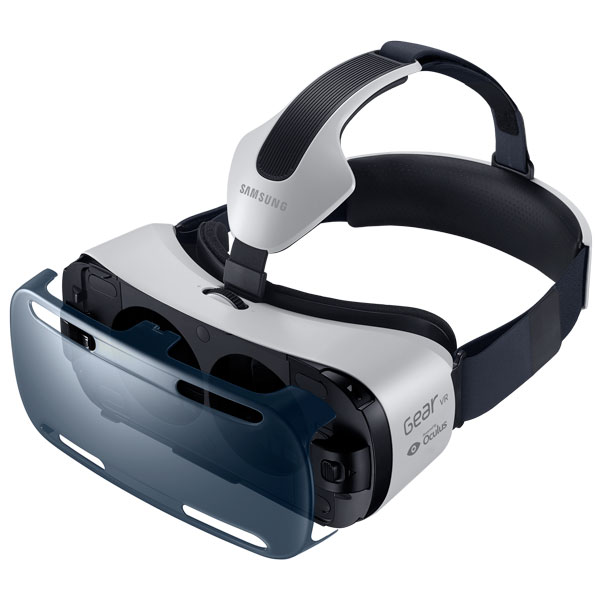WASHINGTON — You can get immersed in virtual reality in your living room now, but the question of whether VR will become mainstream can’t be answered yet.
I had my first experience with a virtual-reality headset recently, as the folks from AT&T brought the Samsung Gear VR around.
“It is a device you strap onto your head, insert a Samsung Note 4, and then the device will give you a 3-D virtual reality experience,” said Nickolas Parker, retail stores manager at AT&T.
By pairing the device with the Note 4 — currently the only phone compatible with the Gear VR headset — the wearer enters a 3-D world that magnifies the sensation felt by those who have looked at a vacation through a tiny plastic scope or played with a ViewMaster.

Unlike images viewed in earlier, static 3-D-ish devices, current VR scenes change, depending on what the wearer does.
“It’s totally immersive,” says Parker. “It has motion detectors in it, so it knows where you’re looking — looking up, down, left and right.”
For someone who has never experienced a VR device, it’s difficult to know what to expect from the experience.
“In a demo mode, we might have a landscape with a waterfall,” says Parker. “If you look down you see animals running through a field. As you look around and pan side to side, the device will know which way you’re looking.”
Parker suggested I sit down as he handed me the headset — being injected into a totally different scenario than reality can cause a loss of balance or hand-eye coordination.
As soon as I put on the Gear VR, I saw a man in a white T-shirt sitting at a piano in what appeared to be his apartment. Cigarette smoke slowly drifted toward the ceiling.
Turning my head to the right, my view panned through his room, past guitars on guitar stands, furniture.
Looking the other way, his apartment opened into a studio kitchen.
Glancing down, the man’s dog picked up its head, and then went back to relaxing on the wooden floor.
It was like being there.

What’s next for virtual reality?
Parker says playing games in virtual reality is far more lifelike than on standard screens.
“Because the Gear VR has a 96-degree viewing angle, anywhere you look there’s visual, in comparison with you playing a game on your computer, tablet, phone,” says Parker. “With this, there’s screen everywhere. So you’re really immersed inside the environment.”
Content for the Gear — demos, games, experiences — is available for download from Oculus, the VR powerhouse that partnered with Samsung and is developing its own Oculus Rift, in addition to being involved with other manufacturers. There is also an Oculus app in the Galaxy play store that has games and content.
The Gear VR also comes with a 16gb memory car that is preloaded with some demo content.
“Movies will be produced for it,” says Parker, for a viewing sensation that would put the viewer in the action.
As with most emerging hardware, its success or failure often rests on content creators and developers who can find ways to make the device useful.
Possible uses could include real estate, where a husband and wife could tour without having to drive there. Other applications could be educational, including tours of museums.
A user selects content via a touchpad on the headet, through a combination of looking at the option (while the device senses where your eye is and provides a cursor) and clicking the touchpad.
The VR Gear costs $199 in the U.S.
Follow @WTOP and @WTOPtech on Twitter and the WTOP Facebook page.








